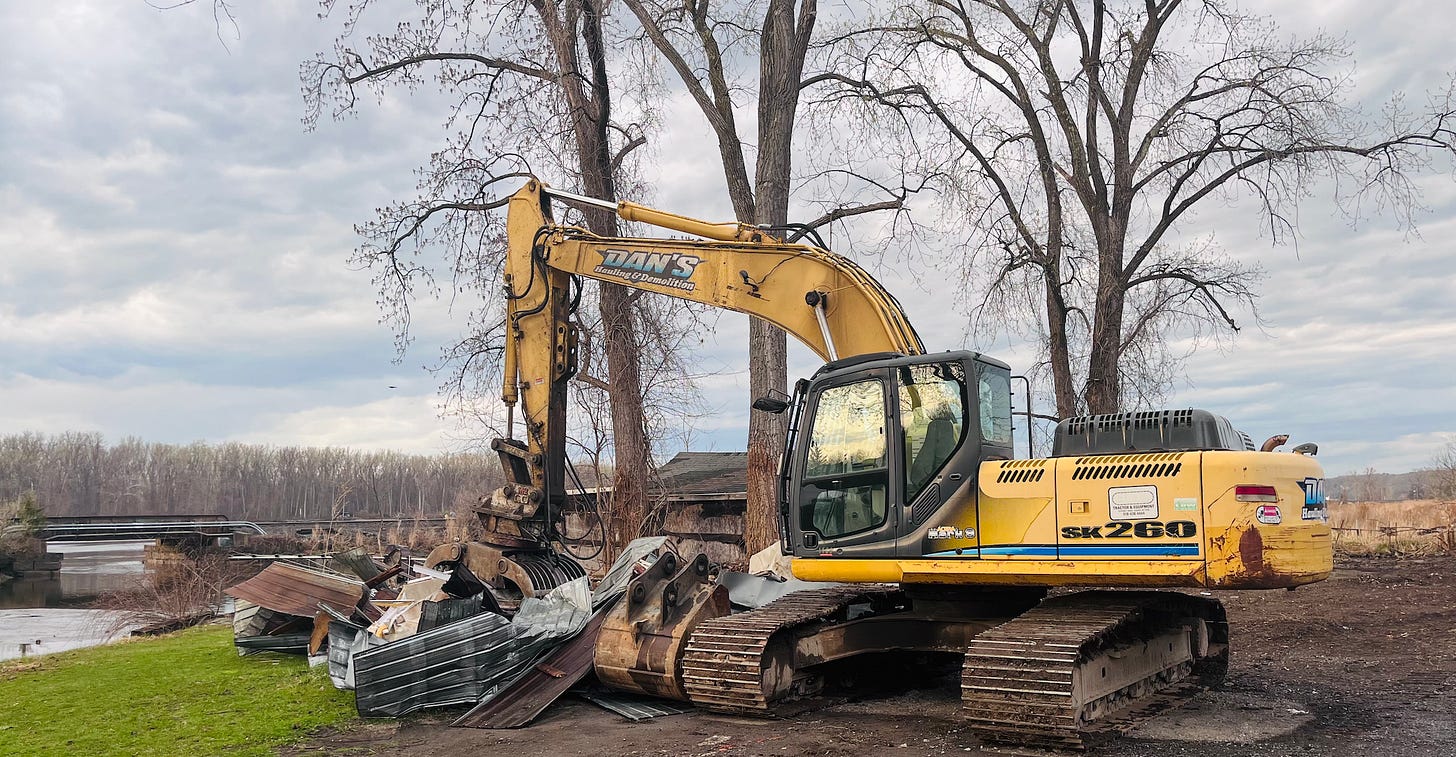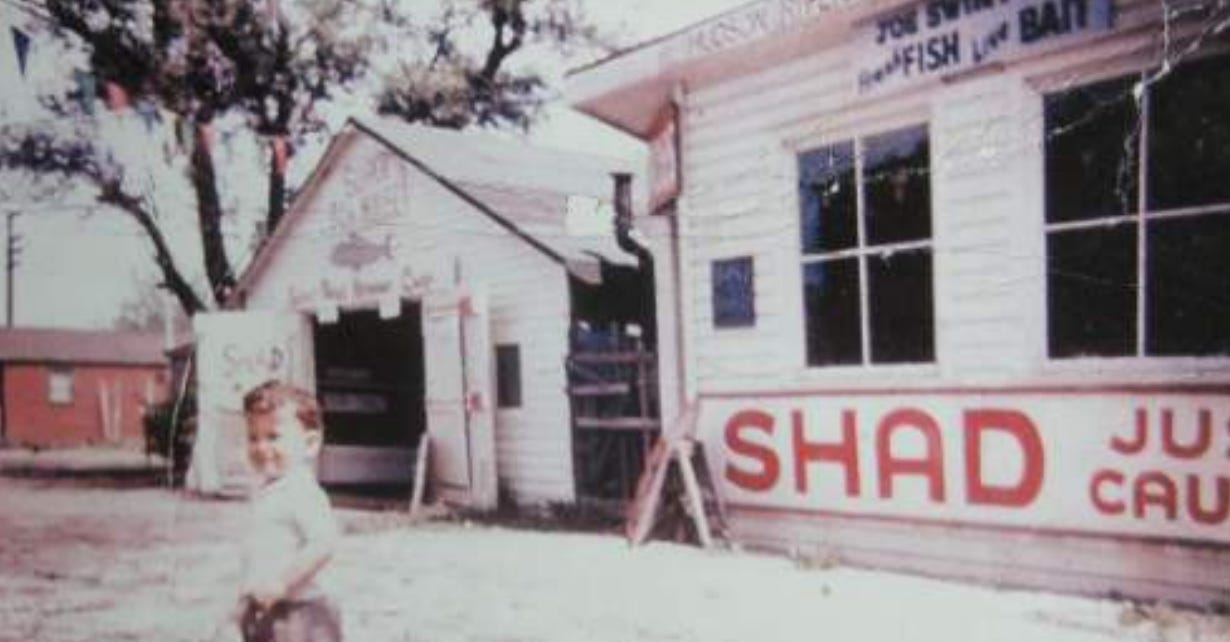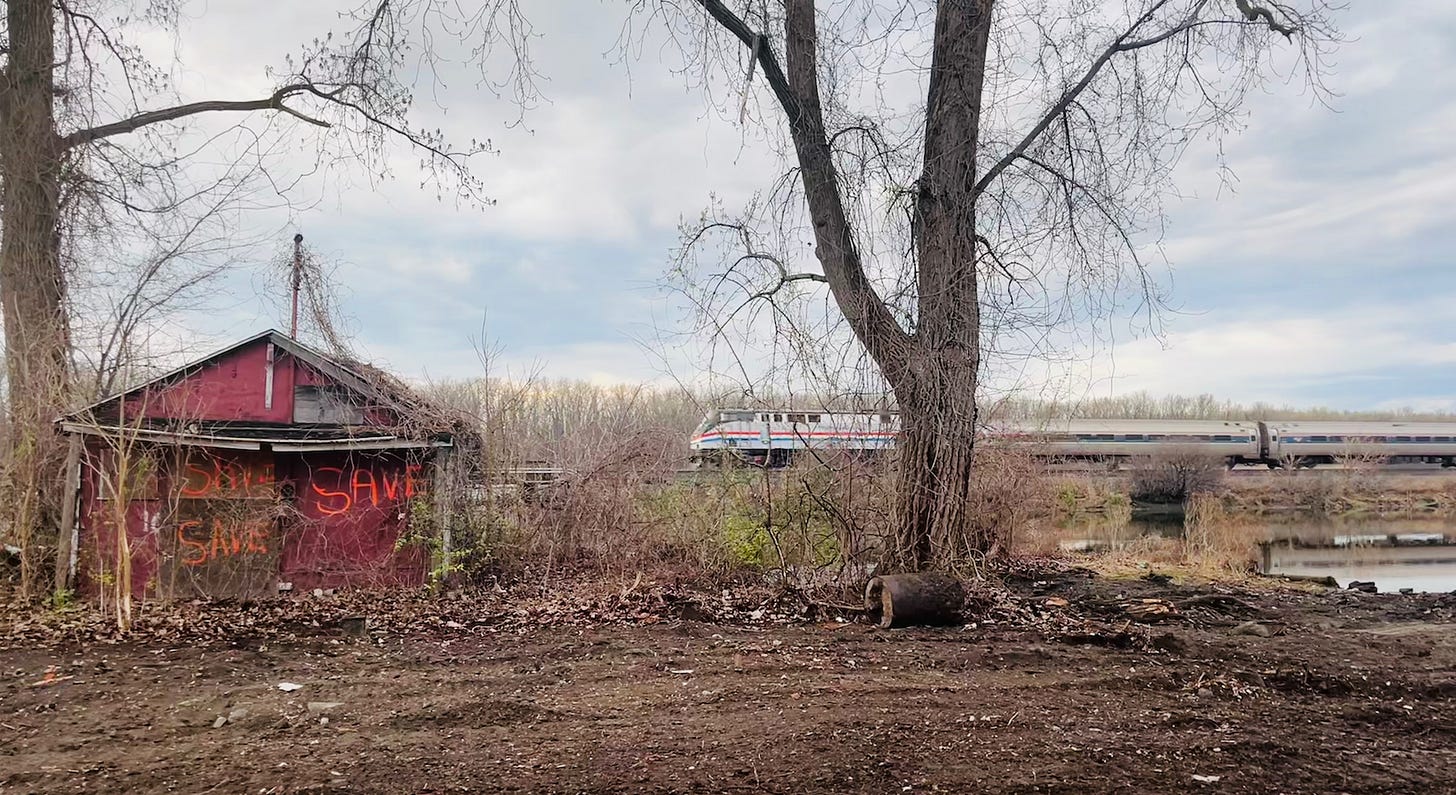The Last Shacks: Saying Goodbye to The Furgary and a Piece of Hudson’s Heart
On Shantytown, forgotten rituals, and how we grieve
The shacks came down this week. Quietly, without ceremony, gathering, or farewell. Just a stretch of riverfront suddenly bare.

If you're new to Hudson, you may not even have heard of the Furgary Fishing Village (aka Shantytown, the shacks, the Fugary Boat Club). Maybe you've passed the patch of land in the North Bay, just past what’s now Kite's Nest, and wondered about those leaning, hand-built structures. You might not have known they had a name — or that they held generations of history inside their weathered walls.
Locals mostly call it Shantytown or the shacks — though no name really captures what it was. For over a century, families fished there, built there, smoked shad (a herring-like fish), and passed down their little river shacks like heirlooms. They were homes, gathering places, lifelines — sometimes the only steady thing a person had.

The Furgary — a name, I recently heard, derived from the phrase "the fuck are we?" — was never polished. It’s never made it into a glossy spread as a featured location to visit when you hop off the Amtrak in our magical little city. But for many of us, it was part of the city's heart.
Built by working-class families beginning in the late 1800s, the Furgary shacks stood on land first inhabited by the Mohican people and was later claimed by European settlers in the 1600s. This portion of the North Bay was said to have been purchased by a German immigrant in the 1600s. By the 1880s, the land had become the start of what would become Shantytown. The shacks were never formal housing. They were necessity and resourcefulness in wood and tin — camps perched on stilts above the marshes of the North Bay, patched together from salvaged materials.
These weren’t second homes (although a village of boating shacks that were not primary residences used to exist where the boat launch is now; my grandmother had one). They were bases for shad fishing - a seasonal bounty that helped sustain many local families through the Great Depression and World War II - as well as sturgeon fishing, net repairing, cookouts, and storytelling at the edge of the river. Some families passed down their shacks through four, five, even six generations.
By the early 2000s, as Hudson changed and the waterfront came under new pressures – from liability concerns to environmental risks to public safety – the future of the Furgary became uncertain. The city, it turned out, officially owned the land. In 2012, after long legal disputes, the last occupants of the shacks were evicted. And until this week in April 2025, the shacks remained — weathered, abandoned, beloved by those who remembered them.

In 2015, the New York State Historic Preservation Office (SHPO) found the site eligible for the National Register of Historic Places — a recognition of its cultural importance, but not a guarantee of protection. By early this year, a new city inspection declared the structures unsafe and contaminated with asbestos. Demolition was recommended unless major stabilization efforts could be made — and they couldn’t. This week, most of the shacks were taken down. Four were saved, to be folded into a future park.
The decision wasn’t made lightly. Many of the city officials who worked on the project had personal ties to Shantytown — family histories, childhood memories, emotional stakes. But in the end, practicality won out. The shacks would come down.
The quiet demolition of the Furgary didn’t just mark the loss of a few decaying buildings. It reflected something deeper about how we, as a culture, handle endings – or rather, how we often don't.
In many places around the world, endings are marked with ritual. Gatherings. Songs. Shared grief. Here, we move on quickly. We’re told that progress demands it. Nostalgia is inconvenient. Grief is inefficient.
So when a family home is sold, a local institution closes its doors, or a historic village is demolished, it often happens with little more than a press release. And those who remember are left to grieve privately, if they grieve at all.

Maybe it's no one’s fault exactly — a combination of city pressures, overwhelmed communities, and the culture that prizes the new over the difficult work of remembering. But still, the lack of ceremony leaves a mark. When we don't name an ending, when we don't hold a space for it, something lingers. There’s a weight we carry forward with us.
The Furgary was never going to be preserved exactly as it was. Time and tides had already seen to that. But in mourning its end, maybe we can learn something for the next time. About the power of pausing. About honoring what has shaped us, what has shaped our community, even as we let it go.
Last Saturday, I went down to the shacks to take what I knew would be a final look at the last few standing. Some shacks were already crushed, their remains scattered across the mud and reeds.
Others stood with "SAVE" spray-painted across their fronts — I eventually realized that these markings were done for the benefit of the demolition crew, but at first I read it as a plea from our community. Save this history. Save these memories. An excavator sat idle nearby. A train passed as I stood by the river, the rumble weaving into the sounds of the water and wind, just as it had for generations.

I took a few pictures, but mostly, I tried to memorize the feeling. I imagined the generations of Hudsonians there, children running along the docks with their parents and grandparents fishing for shad. I thought of all the people I know now who are descendants of Shantytown, whose memories and identities are tied up in those handmade, haphazard shacks.

By Monday evening, when I returned at sunset, most of them were gone. I was surprised by the wave of emotion that I felt. But after reflecting on it, it’s not just the loss of the shacks that stirred something in me. It’s that it was one of many changes happening at what feels like warp speed in Hudson, in the name of function or safety or beautification. Changes that are often made without honoring the history, the memories, and the feelings of those of us who remember. The Furgary was dismantled while no one was looking. Like so many other parts of the Hudson we’ve lost.
My reaction was hardly the most extreme. The loss of Shantytown sparked deep, complicated emotions.
On social media, some locals mourned openly — remembering days spent fishing, laughing, living at the river's edge. Others voiced anger and cynicism, seeing the demolition as another chapter in the slow displacement of Hudson’s longtime families.
"Thank you for displacing 300+ people who loved that place for generations," one commenter wrote.
"Now it's a hipster kayak launch for the city folk," another said.
And what was most poignant to me: "It’s a loss of belonging, not just buildings."
Even as official plans move forward, there’s grief — not just for the shacks, but for the layers of community, memory, and meaning they held.
We can’t undo the loss. But we can choose, as a community, how to carry it.
If you loved the shacks — or even if you're just learning about them now — you can still honor them. Take a walk down there. Sit by the river. Remember what it felt like to stand in a place that wasn’t curated or polished. Write down the stories your parents or grandparents or neighbors told you. Record an elder's memories. Tell your children.
The city has plans for the site: a fishing park, a tribute to the Furgary community, small but meaningful. You can read about them here. Share them around. Show up when they’re discussed. Insist on remembering. Make sure that when new people walk the river’s edge, they know what came before them.
Because it’s not just about buildings. It’s about belonging. About the right to say: we were here. We remember. And we always will.
###
If you want to learn more about the shacks, check out the following resources:
An oral history with Leo Bower, who has deep ties with The Furgary
An interview with Leo Bower for the Hudson Area Library History Room
Tales from Hudson’s Shantytown by the The Other Hudson Valley
Furgary Boat Club and Shantytown from A Secret History of American River People
Preserving a Cluster of Fishing Shacks From Hudson’s Forgotten Past from The New York Times
And if you’re enjoying these posts, please considering forwarding them to a friend. I’m hoping to build a space for memory, meaning, and community — and by sharing you’re helping me do just that!






We must protect our weird spaces.
Beautiful and poignant. I'm glad I got to spend some time there. Thanks for sharing this powerful post.